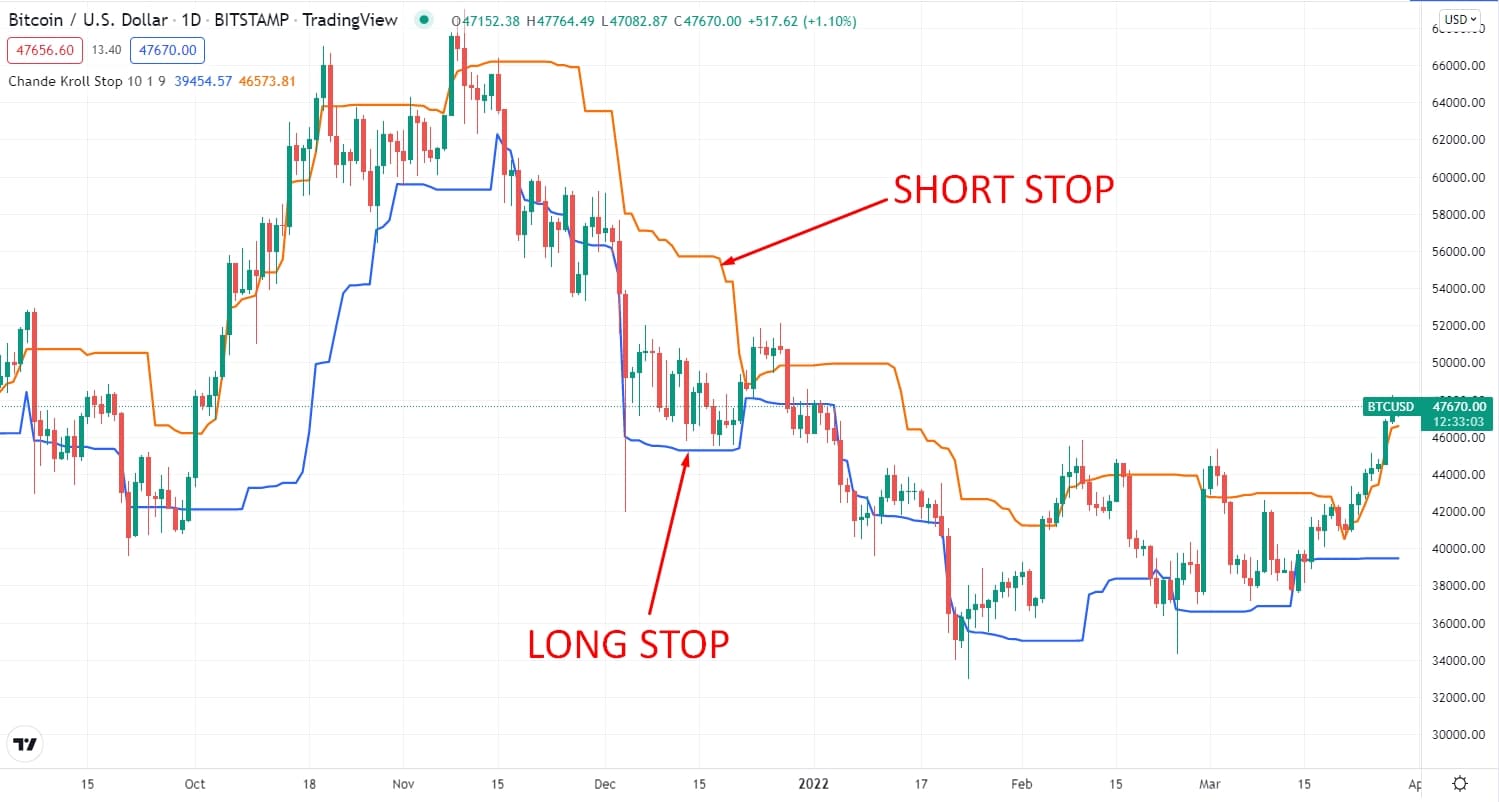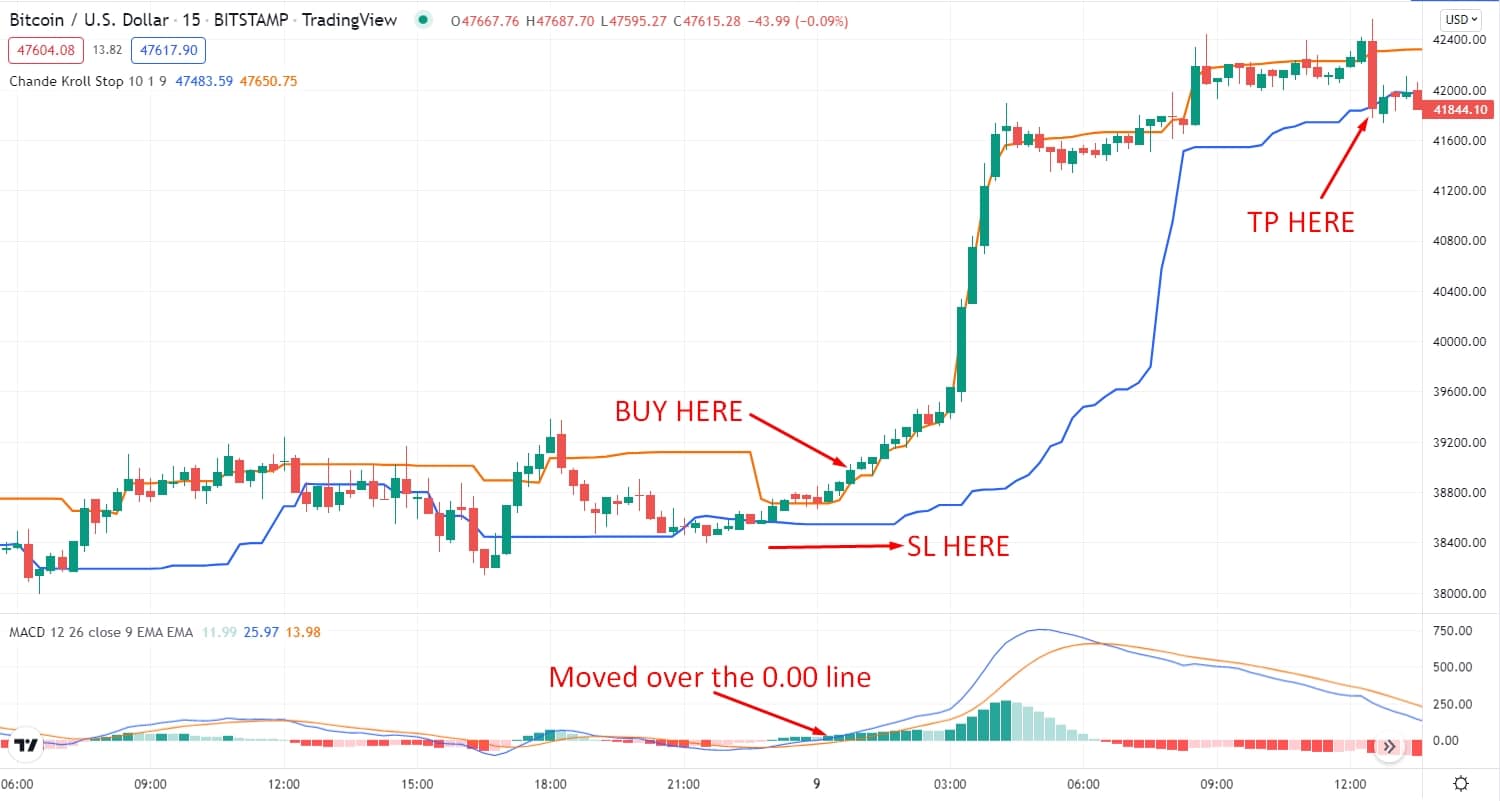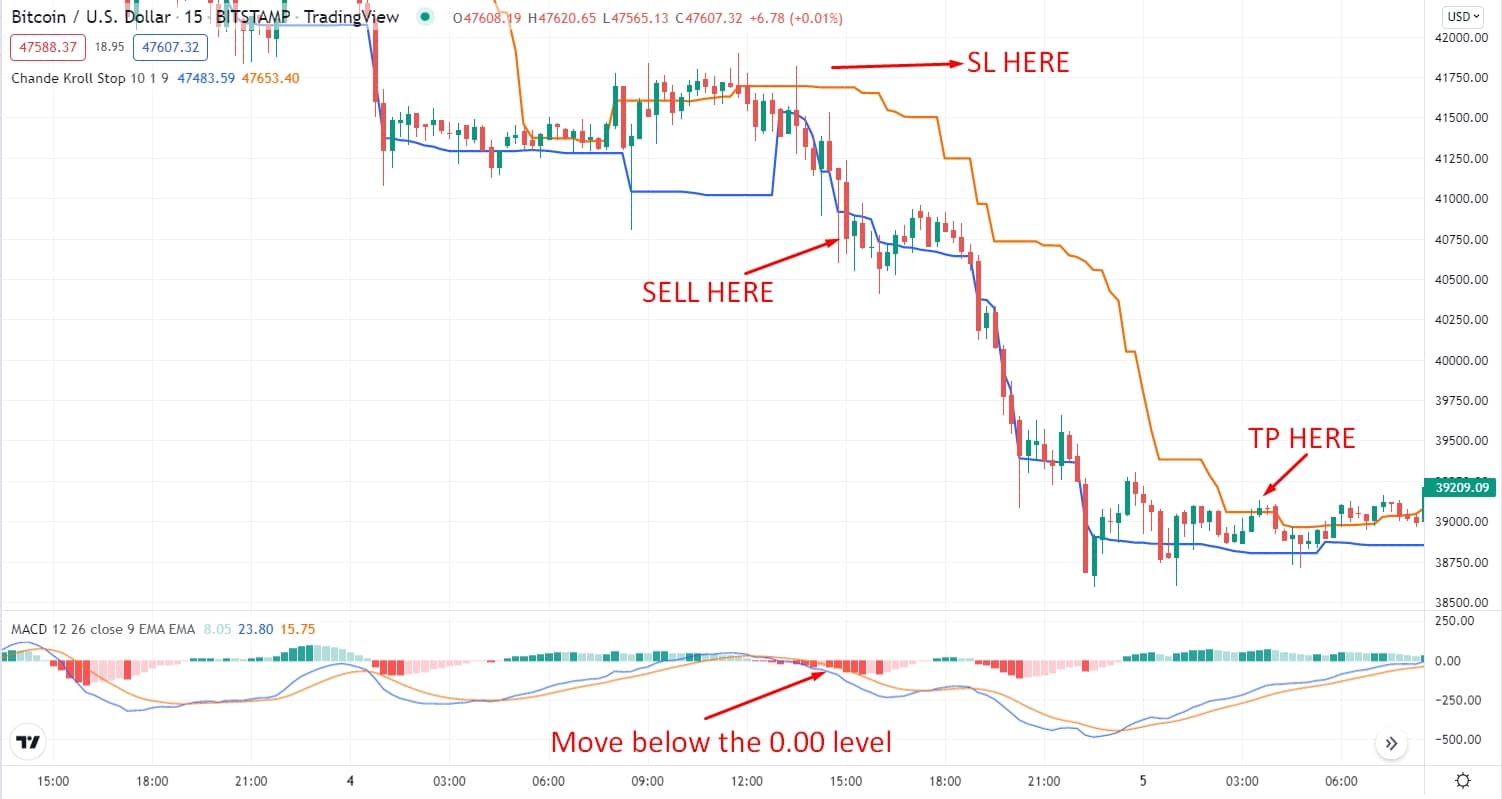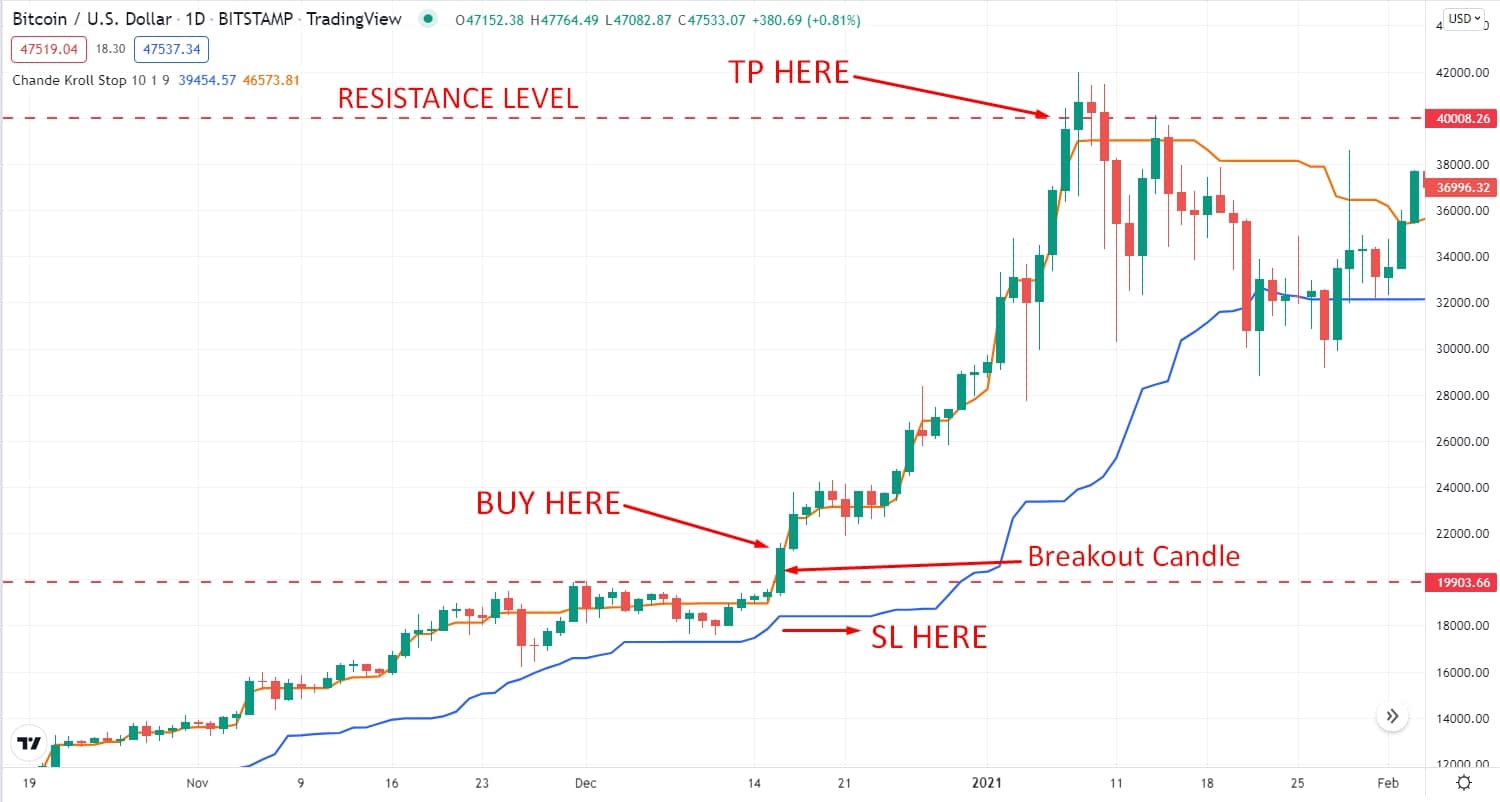“The New Technical Trader,” a financial trading book that talked about the Chande Kroll Stop strategy for the first time. Since the Chande Kroll Stop is developed as a trend-following indicator, it helps to point out the stop for the traders. In pinning down the stop, it enumerates the ATR- average true range of the market trend and classifies any market volatility.
Still, many people don’t know about this indicator’s effectiveness in the crypto market. The following section will see the complete crypto strategy guide that includes exact buying and selling trading methods.
What is Chande Kroll stop?
It is a technical tool that works as a ceiling and bottom of the price. Therefore, investors can define the most reliable reversal point of a crypto asset. Green, red and blue lines represent a story of the market that a trader should read before opening the buy or sell position.
The red line works as dynamic support or resistance from where the reversal may happen. It is also known as the stop line of the indicator. Besides finding the price reversal area, it also works as a tool to measure price volatility. The increase in volatility will widen the Chande Kroll gap while the impulsive momentum will keep them moved parallelly.

How to trade using Chande Kroll stop indicator in trading strategy?
The tool works as dynamic support or resistance to the price where any breakout above these lines opens a buying opportunity. On the other hand, if the price moves below these lines with a candlestick close, we can define the market trend as bearish. In that case, finding a bearish opportunity would be the best option.
On the other hand, the Chande Kroll Stop will move nowhere, like straight lines in a sideways market. Therefore, the best trading option appears when the price moves. It means any breakout trade using this indicator has a higher success rate.
Furthermore, traders can use the Chande Kroll Stop to utilize in terms of stopping trend changes. A new uptrend will appear while the green/blue line surpasses the red line. On the other hand, if the red line runs below the green/blue line, it is a sign of a new bearish trend.
A short-term trading strategy
Here we will add the indicator for understanding the market momentum. Besides, we will add the MACD indicator to identify the entry points. You can apply this strategy to the M5 and the M15 time frames.
Bullish trade scenario
First, you must add the Chande Kroll stop indicator to the chart. After that, we will add the MACD indicator to the chart for further confirmation. We will look for the price to close above the orange line in this bullish trade scenario. Also, the MACD indicator’s lines move over the 0.00 line after a bullish crossover.

Entry
Open a buy trade when the price has an impulsive bullish candle close over the orange line.
Stop-loss
Place the stop loss order below the blue line with at least a 5-10 pips buffer.
Take profit
Take the profit by calculating at least a 1:3 risk/reward ratio. Otherwise, you can take the profit when the price closes below the blue line with a bearish body.
Bearish trade scenario
First, you have to add the indicator to the chart. Besides, we will add the MACD indicator to the chart for further confirmation. In this bearish trade scenario, we will look for the price to close below the blue line. Also, the MACD indicator’s lines move below the 0.00 line after a bearish crossover.

Entry
Open a sell trade when the price has an impulsive bearish candle close below the blue line.
Stop-loss
Place the stop loss order above the orange line with at least a 5-10 pips buffer.
Take profit
Take the profit by calculating at least a 1:3 risk/reward ratio. Otherwise, you can take the profit when the price closes above the orange line with a bullish body.
A long-term trading strategy
Here we will add the Chande Kroll Stop indicator for understanding the market momentum. Besides, we will draw support and resistance levels and wait for the levels to break with a daily candle. Moreover, you can apply this strategy to the H4 and the D1 time frames.
Bullish trade scenario
First, you have to add the indicator to the chart. In this long-term bullish trade scenario, we will look for the price to break above the resistance level with an impulsive daily bullish candle.

Entry
Open a buy trade when the price broke above the resistance level with an impulsive bullish candle and had a close above the orange line.
Stop-loss
Place the stop loss order below the blue line with at least a 10-15 pips buffer.
Take profit
Take the profit by targeting the upcoming resistance level. Or else, you can take the profit by targeting at least a 1:3 risk/reward ratio.
Bearish trade scenario
First, you have to add the Chande Kroll stop indicator to the chart. In this long-term bearish trade scenario, we will look for the price to break below the support level with an impulsive daily bearish candle.

Entry
Open a sell trade when the price broke below the support level with an impulsive bearish candle and had a close below the blue line.
Stop-loss
Place the stop loss order above the orange line with at least a 10-15 pips buffer.
Take profit
Take the profit by targeting the upcoming support level. Or else, you can take the profit by targeting at least a 1:3 risk/reward ratio.
Pros & cons
| Pros | Cons |
| Applying the indicator enables traders to determine the ending and start of a trend. | The indicator is not suitable for exclusive execution. |
| The indicator benefits traders for preparing to take trades in the market direction. | Sometimes it provides false trend reversal signals. |
| It helps traders to rapidly spot the trade opportunities in the trend direction and may signal the entry and exit point of the trades. | In the case of using the indicator all alone, it may provide false signals. |
Final thoughts
In a nutshell, the indicator is a stop comprising two overlaid lines on the price chart. The indicator is developed by taking the true averages of a particular period to stop trade losses to a certain point. Therein, they will be volatile to the market, and whereinto the market trend may chop and change the direction in all probability.




